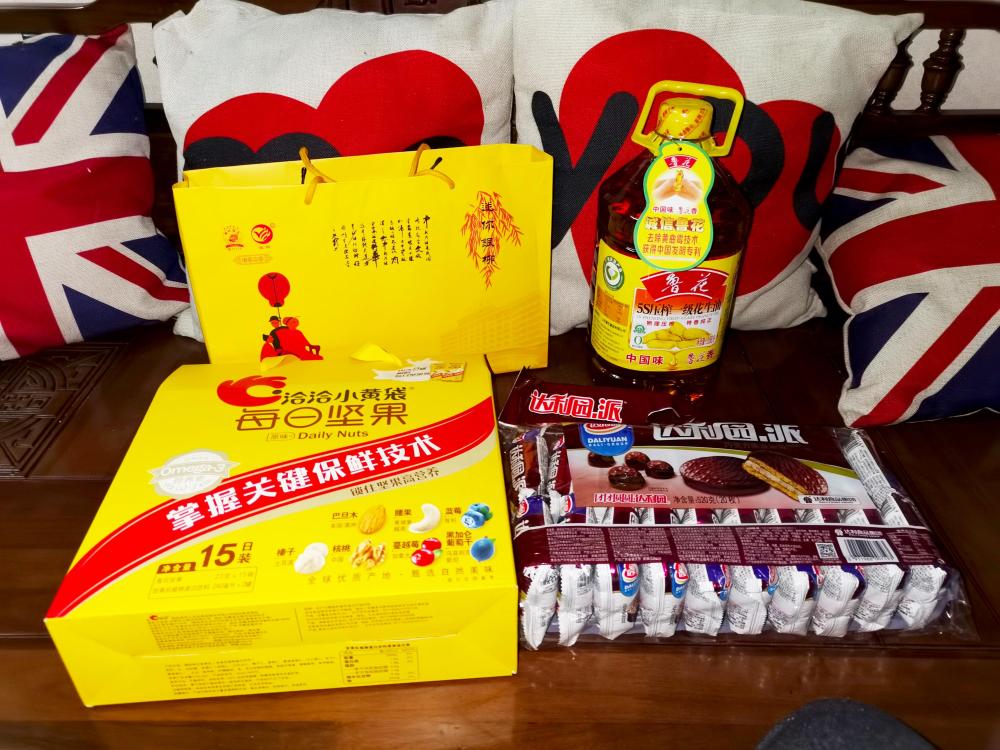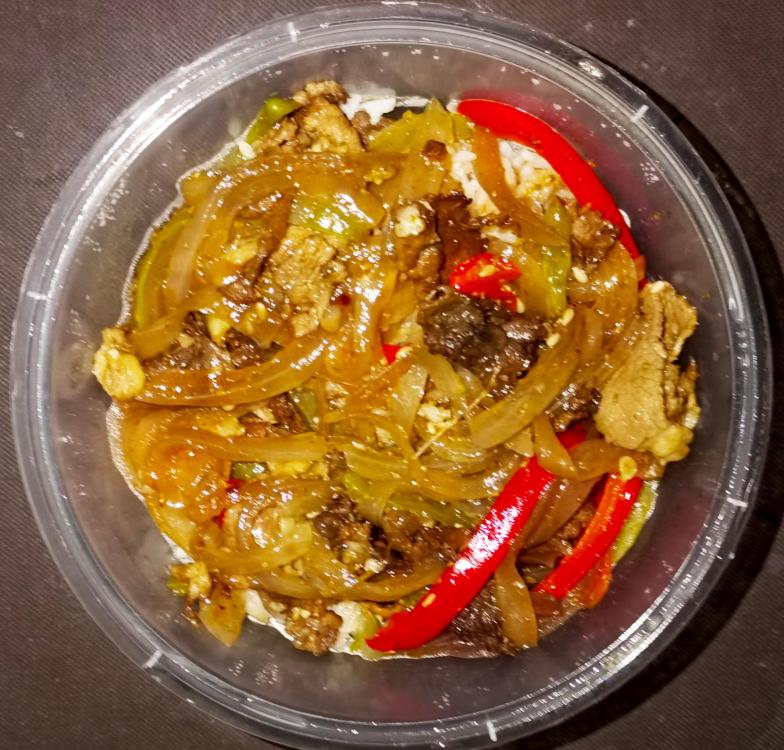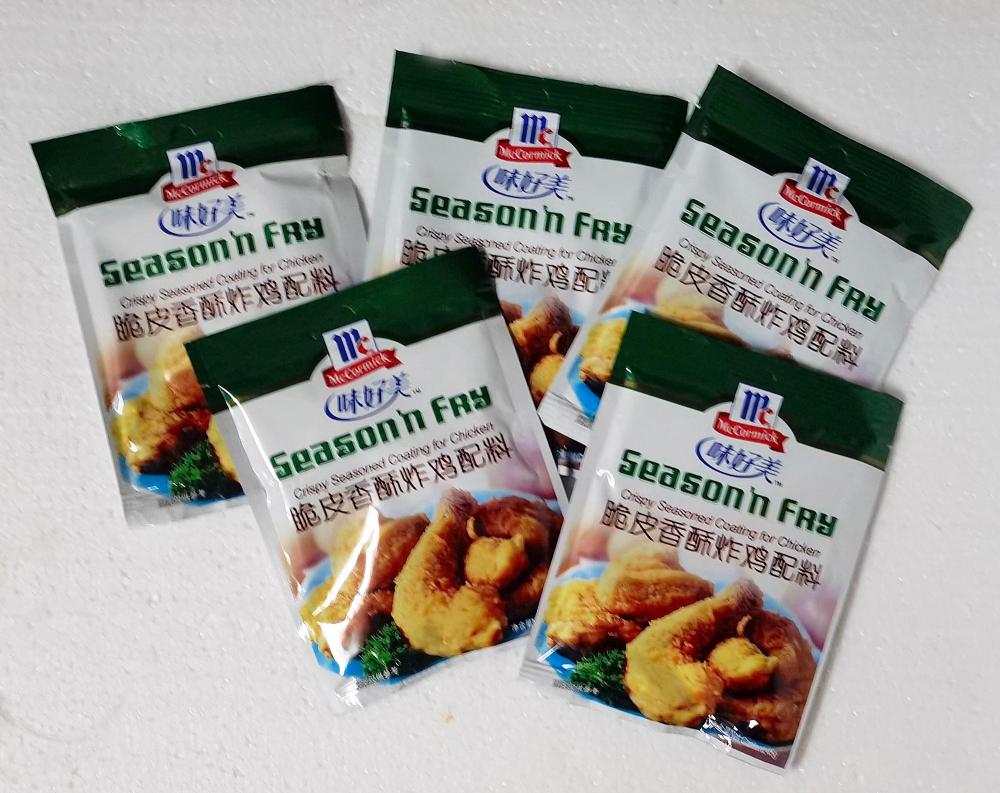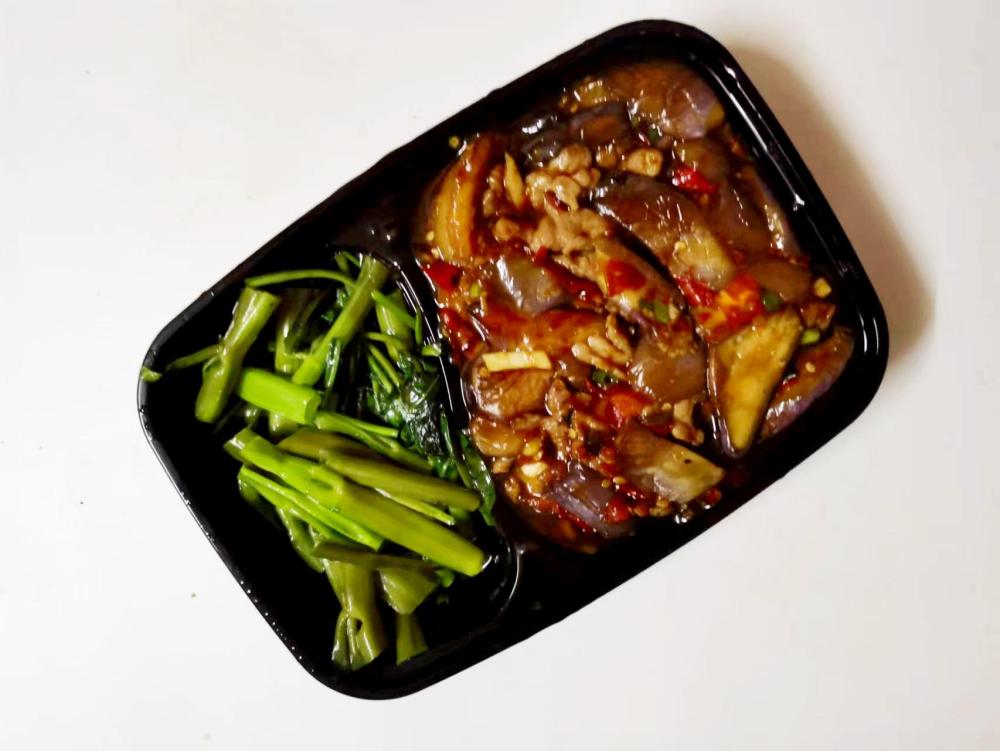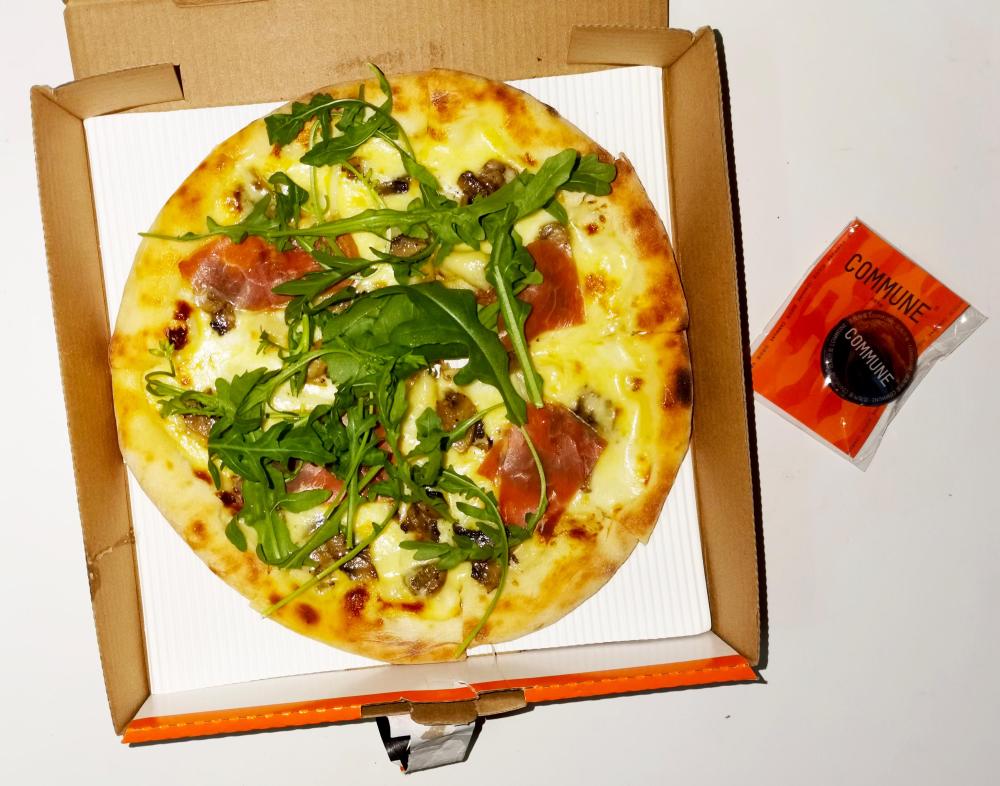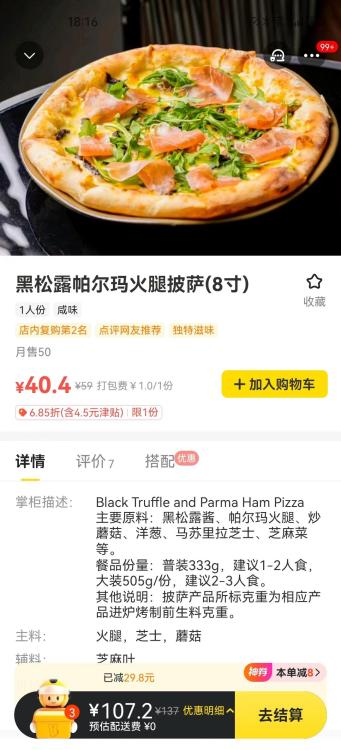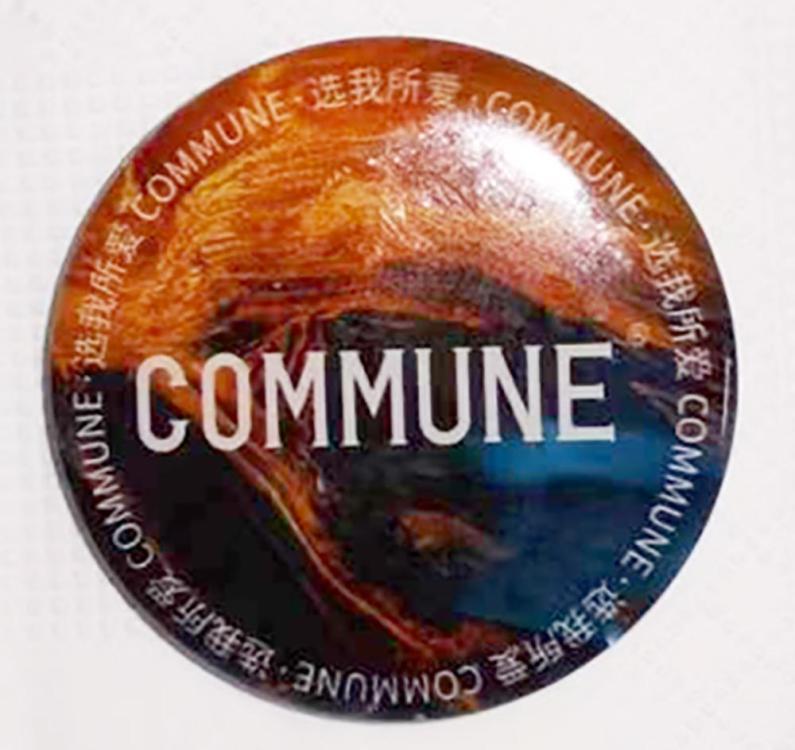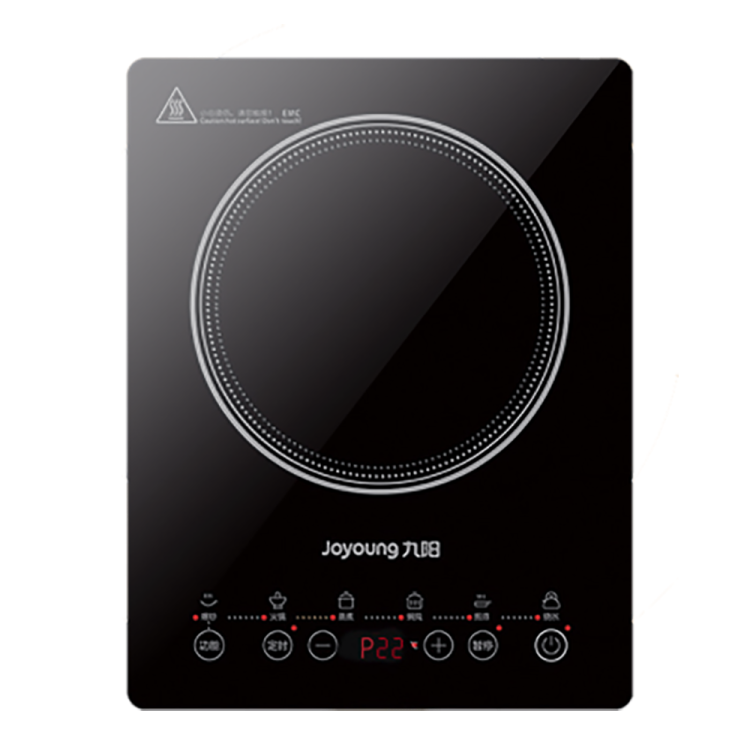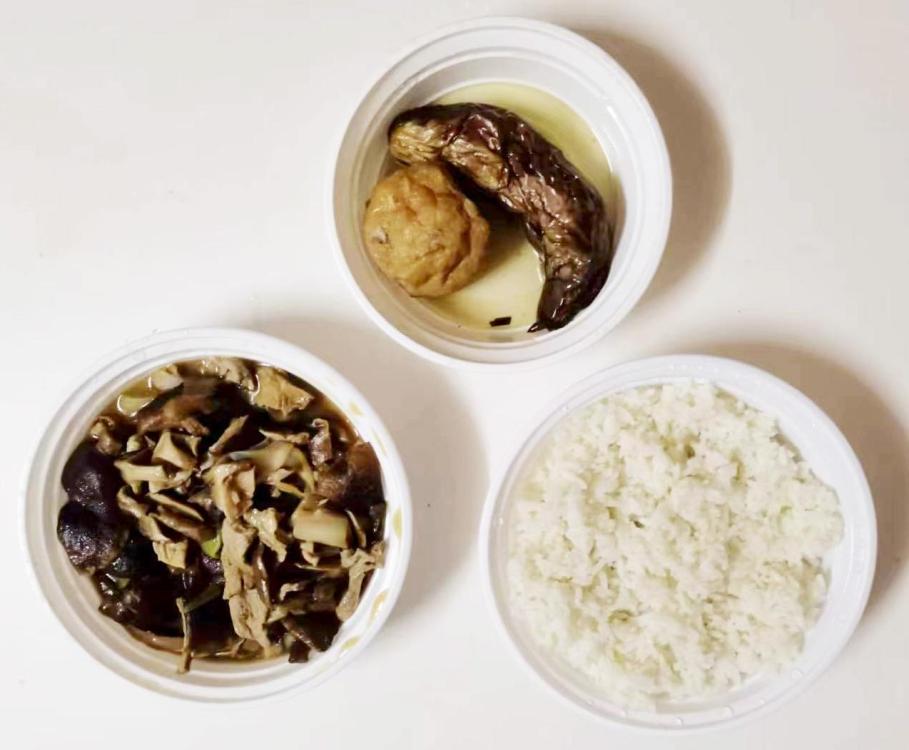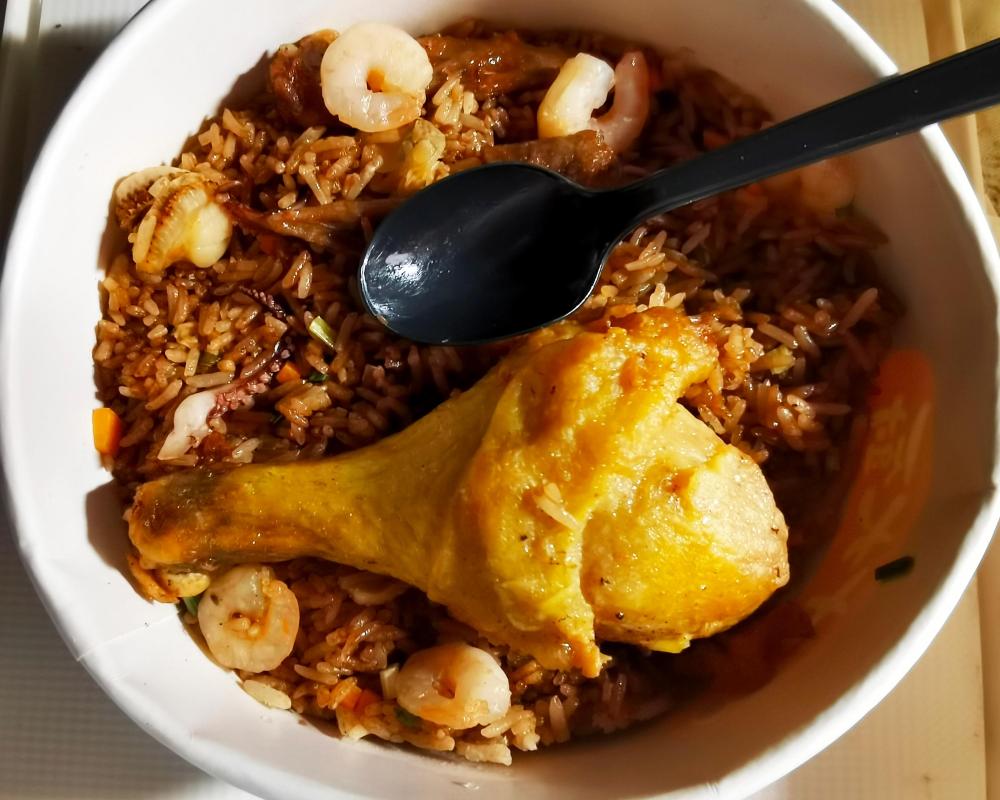-
Posts
16,674 -
Joined
-
Last visited
Content Type
Profiles
Forums
Store
Help Articles
Everything posted by liuzhou
-
Tomorrow (29th) is the Mid-Autumn Festival which moves around like Easter does. Sunday, October 1st, is China's National Day (the 74th Anniversary of Mao declaring the People's Republic from the balcony of the Forbidden City in Beijing) and is celebrated with a week long holiday. This year the two abut so are being combined into an 8 day holiday. So everything stops at 6 pm tonight until October 7th. This afternoon, two people from the local government turned up at my door bearing gifts. Back left is a box of mooncakes, the traditional gift for Mid-Autumn Festival and front left are a load of assorted nuts. Back right is 5 litres of peanut oil while in front are some small cakes. They also brought ten 100ml cartons of UHT milk and 20 rolls of toilet paper. Happy Mooncake Day!
-
Here we have the ugliest presentation of delivered food I've ever seen. 新疆孜然羊肉盖饭 (xīn jiāng zī rán yáng ròu gài fàn), Xinjiang cumin lamb over rice. Didn't taste much better. From a local Xinjiang restaurant. ¥23.90 / $3.27 USD. Won't be revisiting. ¥23.90 / $3.27 USD
-
I am sure there are at least dozens of books with pâté en croûte recipes out there. It is going to be difficult to pin down with such scant detail. Do you remember anything else?
-
First recorded in 1959 in yes, Canada.
-
Mices can get in through the smallest gaps. I once saw one wriggle in to my house in Hunan through a firmly, so I thought, closed window. He or she attempted to leave abruptly though when Nora Mao, my cat took issue with its presence and had it for breakfast.
-
It might be an old-age thing, but I do get occasional cravings for the strangest things that I never particularly liked when I was younger. These are nearly all savoury items. Minced beef pies. Steak and kidney pies. Yeah, pies come into my craving repertoire a lot. Rhubarb pies or crumbles. Gooseberry ditto. I suspect it's largely because I can't get them here and have no oven to make them in, anyway. Also, can't get fresh rhubarb even though it is native to China; it all gets dried and used in the TCM nonsense.
-
Corona beer isn't so bad that they have to cancel a beer festival, is it? Oh! Wait. Yes, probably! 🤪
-
All very amusing. Occasionaly, I coat pork tenderloin 'steaks' in this commercially produced coating from McCormacks or I use local versions. This one is for chicken, but they also do some for pork. They are indistinguishable apart from the name on the packaging. They come spiced or non-spiced. We also get panko style bread crumbs* in both the white and yellow/orangey versions as well as several other colours. I only use the white and yellow. Purple 'schnitzels' don't appeal. When I coat fish, I only ever batter it, so that doesn't enter my calculations. Panko (パン粉) literally just means 'bread crumbs', albeit they make them differently. They are also made that way here.
-
Before coming to China in 1996, I had never thought of aubergine / eggplant / brinjal as being associated with Chinese cuisine. How wrong I was. 30 years ago Sichuan cuisine was almost unknown in western ‘Chinese’ restaurants. So, famous dishes such as 鱼香茄子 (yú xiāng qié zi), or 茄子肉末 (qié zi ròu mò) were unknown. That has changed. Tonight I went for the latter, 茄子肉末 (qié zi ròu mò), Aubergine / Eggplant with minced pork. This common Sichuan dish is stir-fried with 豆瓣酱 (dòu bàn jiàng), known in America as Toban sauce, or similar. You may see the two parts of the Chinese name, 茄子 (qié zi), eggplant and 肉末 (ròu mò), reversed to become 肉末茄子 (ròu mò qié zi). In restaurants in China, the predominant ingredient is listed first; some restaurants have both on their menu. I go with the eggplant first variety, the most traditional. This was accompanied by 空心菜 (kōng xīn cài, literally ‘hollow heart vegetable’), water spinach / Kangcong / ong choy/ morning glory etc. Another multiple-named ingredient (in both English and Chinese!) Served with rice. That dish is deep, and I couldn't finish it, so I have leftovers for tomorrow' s lunch. Bonus. ¥22.60 / $3.11 USD inc delivery.
-
扬州炒饭 (yáng zhōu chǎo fàn) Yangzhou Fried Rice. Yangzhou is a city sitting on the north side of the Yangtse (note 1) river in eastern China’s Jiangsu Province. The city is known for its refined cuisine and especially for its fried rice, widely considered to be one of the best. The internet is full of recipes, most of them wide of the mark, as are those on YouTube etc. This is an authentic recipe from Yangzhou. Ingredients: 300 grams of cooked white medium grain rice, refrigerated overnight. Red chilli pepper to taste Green chilli pepper to taste 30 grams finely diced carrot 80 grams good quality ham finely diced (note 2) 5 grams white sesame seeds, untoasted 10 grams finely diced onion 3 grams minced scallions 3 grams salt 1 gram chicken bouillon powder Method: 1) Prepare everything before cooking anything! Number one rule of stir-frying. 2) Heat wok and add a little neutral oil (note 3). When oil starts to smoke, add scallions and onions and stir rapidly until fragrant then add the chilli peppers, carrots and ham. Stir briefly, then add the rice, mixing it in well and breaking up any lumps (note 4). When rice is fully incorporated add the salt, chicken powder and sesame seeds Notes 1 The term ‘Yangtse’ is all but unknown in China. The river, the world’s longest, is called 长江 (cháng jiāng), meaning ‘long river’ in Mandarin Chinese. 2 Good quality ham sausage can be substituted. The ham of choice in Yangzhou is Jinhua ham from Jinhua city in neighbouring Zhejiang Province. Good Italian hams work well. 3 Soy oil, sunfower oil, peanut oil or rice bran oil are best. Never olive oil. 4 The best way to do this is to press down of the rice in the walk with the back of a wok scoop. This breaks the lumps without breaking the individual grains of rice. Keep stirring until piping hot and serve.
-
- 2
-

-
Yes. That is true but I was surprised to see a restaurant in China going on with that theory. Most Chinese customers have a strong aversion to uncooked food.
-
Today, I bought a pizza. Pizzas are not vegetables. But this one was delivered to my home accompanied by a vegetable I've rarely seen in markets or supermarkets in China, but occasionally in restaurants. I'm talking about Eruca vesicaria or Eruca sativa Mill., popularly known in Commonwealth English as rocket, from the French roquette which in turn is from the Italian ruchetta. It was adopted into English in the early 16th century. In the USA and Canada, it ls known as arugula from the Calabrian dialect word, aruculu, although this seems to be a mid-20th century innovation. Whatever you call it, it is native to the Mediterranean lands. In Chinese, it is bizarrely known as 芝麻菜 (zhī ma cài) or 芝麻叶 (zhī ma yè). These are misnomers. They translate as ‘sesame vegetable’ or ‘sesame leaf’, respectively. Sesame is a totally different plant, Sesamum indicum, and I have seen no evidence that its leaves are eaten other than being used in TCM, mostly as a laxative. I was surprised that the rocket was delivered separately to be eaten uncooked or just wilted in the pizza’s residual heat. When it is (only occasionally) used in Chinese cuisine, it is usually lightly stir fried like any other green vegetable rather than being treated as a herb. Occasionally it is added to soups. Eruca sativa Mill.
-
I'd agree, but the shop is only five minutes away and I do like it a bit wilted. Certainly not to sogginess, though.
-
I didn't know what I wanted tonight, but I knew what I didn't want - 中餐 (zhōng cān), Chinese food or, really anything Asian. But, not being up to cooking for myself, I only had the chance to sort out something from the least bad western places. I remembered a recently opened place that I'd ordered from before, but couldn't remember what I had eaten. I perused their offerings looking for whatever I ate before but failed to spot it, then saw this Normally, I stary clear of pizzas in China, but I'm a sucker for parma ham and arugula which this is offering, so I decided to risk all. Ingredients listed are black truffle sauce, Parma ham, sauteed mushroms, onions, mozzarella, arugula etc. I knew they black truffle sauce would be tasteless; Chinese black truffles always are, Howwever, the pizza was fine, if not as good as the similar one I ate in Saigon five years ago (last time I ate pizza!); this one was a bit oversalty. Also, the arugula arrivedseparately in a plasic bag for me to scatter over the dish, presumably to wilt in the residual heat - it didn't. It did come with a free decal for me to stick onto my cell phone though, not that I will do so. ¥40.40 = $5.54 USD
-
Yes, these are also available here, but have largely been superseded by the induction type of model above. Cleaner and safer when used on the family dinner table.
-
Well yes, but I wouldn't / couldn't get a wok burner. No one in China uses them domestically. We do use stand-alone induction units like this for hot pots etc, but it deals with stir fries just fine when ocassionally needed. Otherwise, domestic gas cookers are used. More on this here.
-
The wok seems small to me for a family of four. I live alone and one of my woks is 32cm which is just big enought for me.
-
The 客家 (kè jiā) Hakka people are displaced Han Chinese from northern and central China who migrated south to escape social unrest in the 17th and 18th centuries. Today, they mainly reside in Guangdong and Guangxi as well as in Taiwan where they are the largest ethnic group. The name means 'guest family'. The Hakka have their own language and customs, especially their cuisine. And tonight, that's what I ate. 客家香菇炒肉 (kè jiā xiāng gū chǎo ròu), 客家茄子酿 (kè jiā qié zi niàng), 娘豆腐包 (niáng dòu fu bāo), Hakka mushrooms stir fried with pork, Hakka stuffed eggplant, stuffed tofu balls. Rice. The mushroom dish featured fresh shiitake and two types of oyster mushroom. $3.50 USD
-
My first wife, mother of my children, during her first pregnancy, developed a craving for rhubarb, especially rhubarb crumble which I was commanded to make regularly. We provisionally dubbed the unknown-gender child 'Rhubarb'. One night, we were lying in bed when she woke me up, complaining I must have cooked the rhubarb incorrectly, as it was giving her stomach aches. But then it would be OK, then painful again. I was first to realise it was nothing to do with rhubarb, but to do with Rhubarb who was starting to sprout. In the middle of the night I ran downstairs to a public phone (this was 52 years ago) and called for an ambulance to the rhubarb extraction facility which they had cunningly disguised as a Maternity Hospital. Soon we were handed a baby girl whom we didn't name Rhubarb, although I sometimes still teasingly call her that. She now has two rhubarbs of her own and two grand-rhubarbs of her first rhubarb. My two great-grand-rhubarb twin boys.
-
I am really getting tired of delivery meals, but have no real choice. Tonight, I went with one I've had many times, but it arrived with a twist. 海鲜炒饭 (hǎi xiān chǎo fàn) seafood fried rice with extra shrimp to help out the squid, mussels and scallops. It came topped with an unordered or charged for 烤鸡腿 (kǎo jī tuǐ) grilled chicken thigh. Bonus.
-



